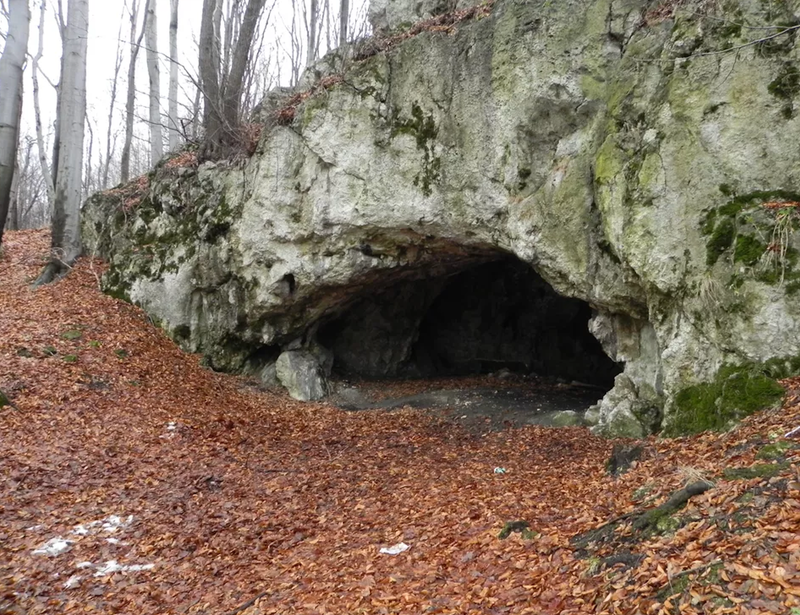The thought of eating human brain is enough to make even the most adventurous eater feel queasy. But a new study has revealed that ancient warriors did just that, after beating their enemies in battle 18,000 years ago. Early Europeans known as the Magdalenians celebrated by removing the ears of their enemies, scooping out their brains, and eating them. In a new study, researchers analysed cut marks on human remains from Maszycka Cave, about 12 miles (20km) from Krakow in Poland.
![[Pictured, entrance to Maszycka Cave, an archaeological site about 12 miles (20km) from Krakow. Maszycka Cave human remains are currently stored in the Archaeological Museum in Krakow]](https://i.dailymail.co.uk/1s/2025/02/10/08/95046129-14379789-Pictured_entrance_to_Maszycka_Cave-a-22_1739176803092.jpg)
Unfortunate opponents 'could have been attacked, subdued, and subsequently cannibalized', according to the experts in Poland and Spain. 'Bodies at Maszycka Cave were intensively manipulated to remove all tissues and make use of their caloric contribution,' they say. 'The butchering process took place shortly after death with no period reserved for the bodies to decompose or dry.'. And the grisly practice doesn't end there - a 2023 study even found that Magdalenians ate their loved ones, simply to dispose of their bodies.
![[In the new study, published in Scientific Reports, the scientists report 'evidence of whole-body manipulation for consumption' at Maszycka Cave]](https://i.dailymail.co.uk/1s/2025/02/10/08/95046125-14379789-Cut_marks_and_impact_marks_on_the_bone_remains_from_the_Maszycka-a-24_1739177677470.jpg)
Early Europeans known as the Magdalenians celebrated by removing the ears of their enemies, scooping out their brains, and eating them. Pictured: cannibalized human remains from the Maszycka Cave - jaw and shoulder blade (scapula) that was processed and consumed. Pictured, entrance to Maszycka Cave, an archaeological site about 12 miles (20km) from Krakow. Maszycka Cave human remains are currently stored in the Archaeological Museum in Krakow.
![[Arrows indicate 'human induced modifications on cranial and postcranial remains' including cut marks (blue and yellow) due to scalping and defleshing of the skull]](https://i.dailymail.co.uk/1s/2025/02/10/09/95048579-14379789-image-a-30_1739181444543.jpg)
In the new study, published in Scientific Reports, the scientists report evidence of 'whole-body manipulation for consumption' at Maszycka Cave. Lead study author Francesc Marginedas, a researcher at the Catalan Institute for Human Palaeoecology and Social Evolution (IPHES) in Spain, said the skeletal remains provide clear evidence of cannibalism. 'The location and frequency of the cut marks and the intentional fracturing of the skeleton clearly show nutritional exploitation of the bodies, ruling out the hypothesis of funerary treatment without consumption,' he said.
![[The three main authors of the study pictured with skeletal remains. From left to right: Francesc Marginedas, Palmira Saladié and Antonio Rodríguez-Hidalgo]](https://i.dailymail.co.uk/1s/2025/02/10/08/95046123-14379789-The_three_main_authors_of_the_study_From_left_to_right_Francesc_-a-23_1739177655954.jpg)
The researchers analysed a set of 63 human bone fragments, including skulls and long limb bones, taken from Maszycka Cave. In all, 68 per cent showed evidence of 'human manipulation' including cut marks and intentional fractures from human consumption such as removal of muscle, the brain and the marrow. Many of the marks on the human bones were found to be similar to those on animal bones – indicating the bodies were processed in a similar way for consumption.
![[The Magdalenians were prehistoric humans that lived in Europe between 23,000 and 14,000 years ago, towards the end of the last Ice Age (artist's depiction)]](https://i.dailymail.co.uk/1s/2025/02/10/09/95047519-14379789-image-a-28_1739180563731.jpg)
Skulls show cut marks resulting from the removal of scalp and flesh, while fracturing on the skulls reveals access to the brain. 'Cranial and mandibular fragments exhibited modifications related to scalping, defleshing and disarticulation,' say the authors. In the new study, published in Scientific Reports, the scientists report 'evidence of whole-body manipulation for consumption' at Maszycka Cave. Arrows indicate 'human induced modifications on cranial and postcranial remains' including cut marks (blue and yellow) due to scalping and defleshing of the skull.
![[The Magdalenian era saw a flourishing of early art – from cave drawing and the decoration of tools to the engraving of stones. Pictured, a bison drawing at Cave of Altamira in Spain thought to be by the Magdalenians]](https://i.dailymail.co.uk/1s/2025/02/10/10/76195545-14379789-The_Magdalenian_era_saw_a_flourishing_of_early_art_from_cave_dra-a-31_1739182170942.jpg)
The three main authors of the study pictured with skeletal remains. From left to right: Francesc Marginedas, Palmira Saladié and Antonio Rodríguez-Hidalgo. The Magdalenian is one of the later cultures of the Upper Paleolithic in Western Europe, dating from around 17,000 to 12,000 years ago. It is named after the type site of La Madeleine, a rock shelter located in the Vézère valley, commune of Tursac, in the Dordogne department of France.
The culture was geographically widespread, and later Magdalenian sites have been found from Portugal in the west to Poland in the east. Magdalenians disappeared as the cool climate warmed around 10,000BC and herd animals became scarce. 'Meanwhile, the skulls bore notches and percussion pits on different areas, generated during the removal of the brain.'. Long bones such as the femur and humerus also show percussion fractures to extract the marrow, an important source of fat and calories.
Overall, analysis indicates a 'comprehensive consumption' of the remains, prioritizing the most nutritious parts. Researchers think documented behaviour could be related to 'intergroup tensions and territorial conflicts' during the Magdalenian period. 'Cannibalism is a behaviour that has been documented at various times in human evolution,' said co-author Dr Palmira Saladié at IPHES. 'In prehistoric contexts, it could respond both to survival needs and to ritual practices or even to dynamics of intergroup violence.'.
The Magdalenians were prehistoric humans that lived in Europe between 23,000 and 14,000 years ago, towards the end of the last Ice Age. Just after ice sheets were at their greatest extent (the Last Glacial Maximum), foraging groups progressively, although not uniformly, expanded towards the territories of central Europe. The Magdalenians were prehistoric humans that lived in Europe between 23,000 and 14,000 years ago, towards the end of the last Ice Age (artist's depiction).





















